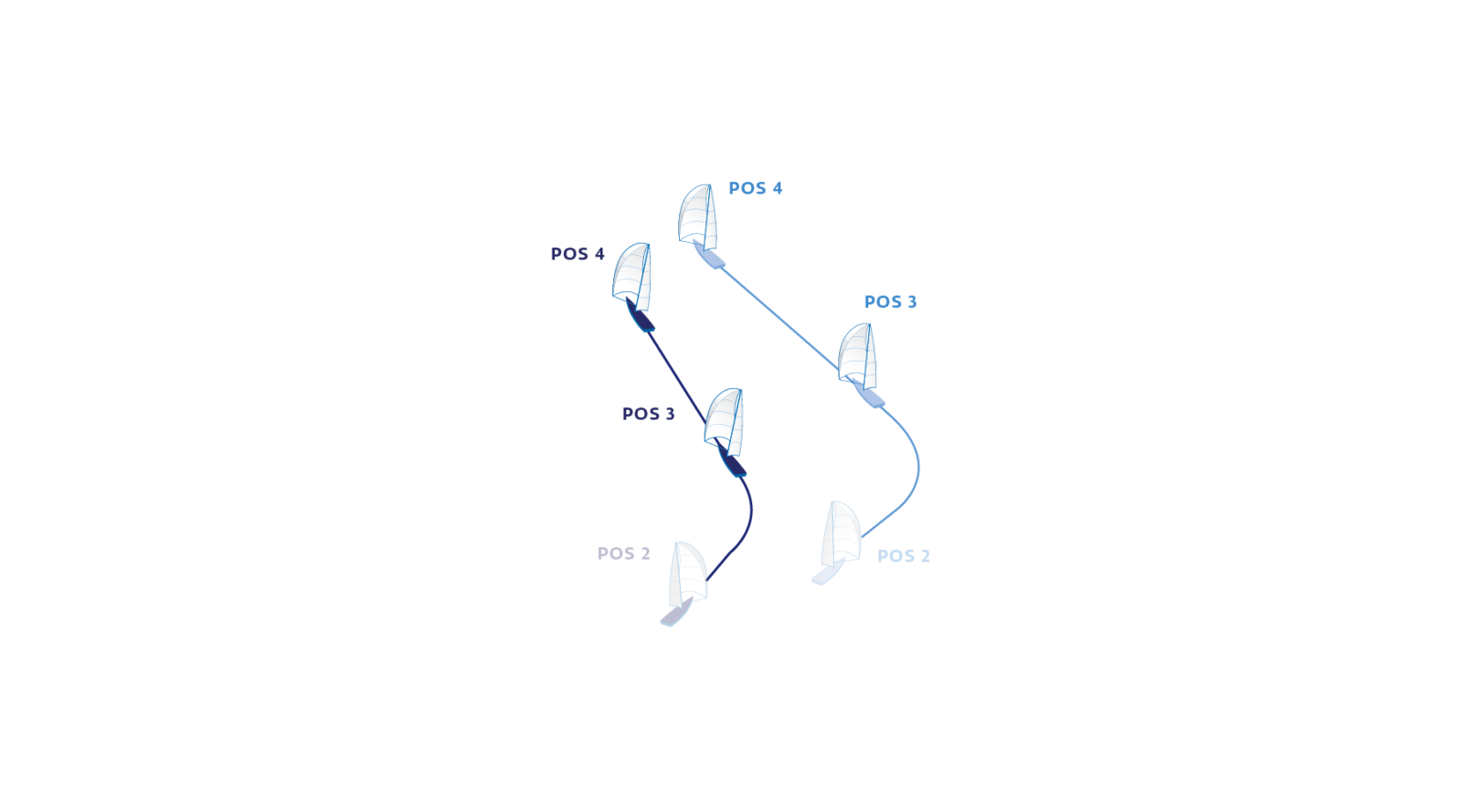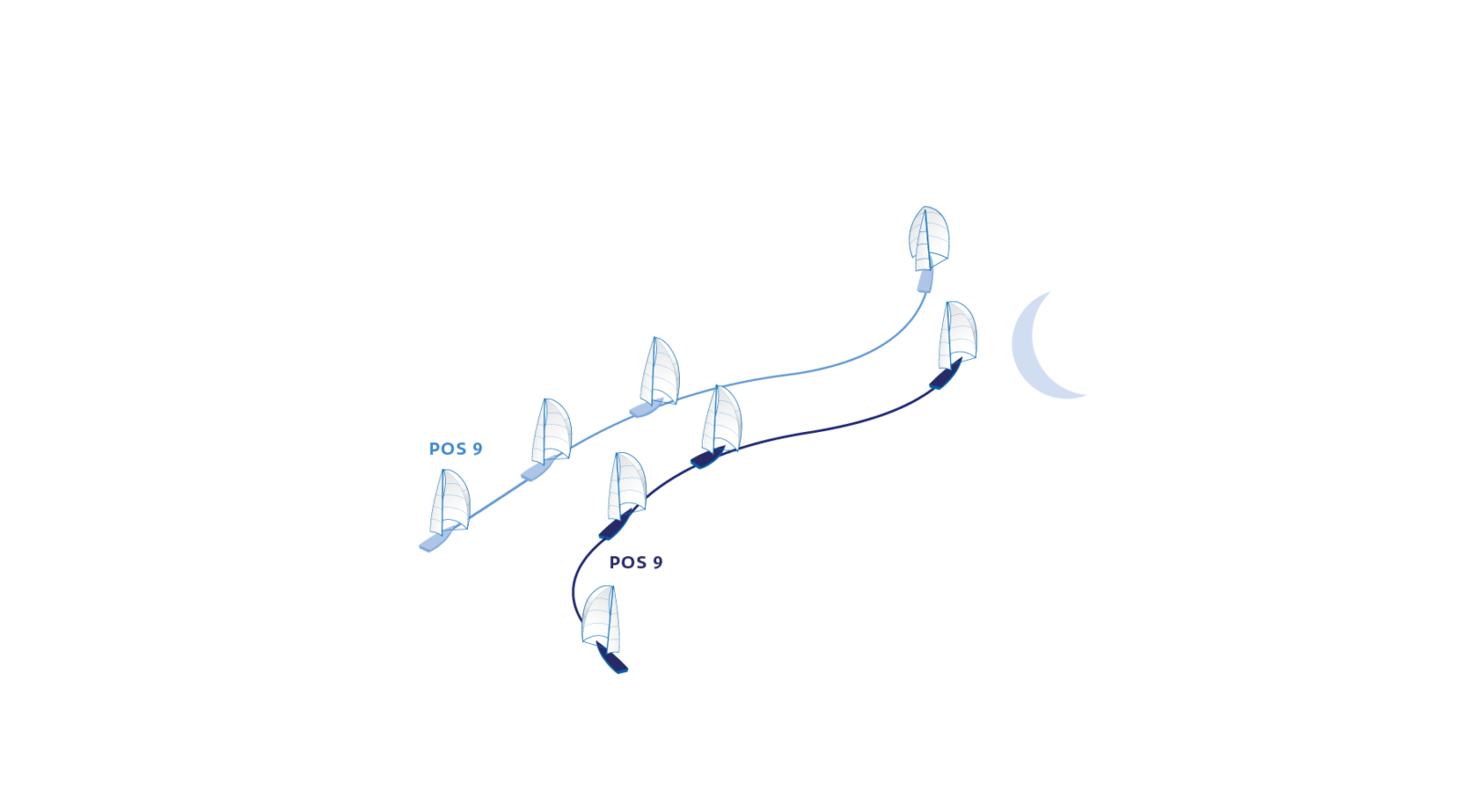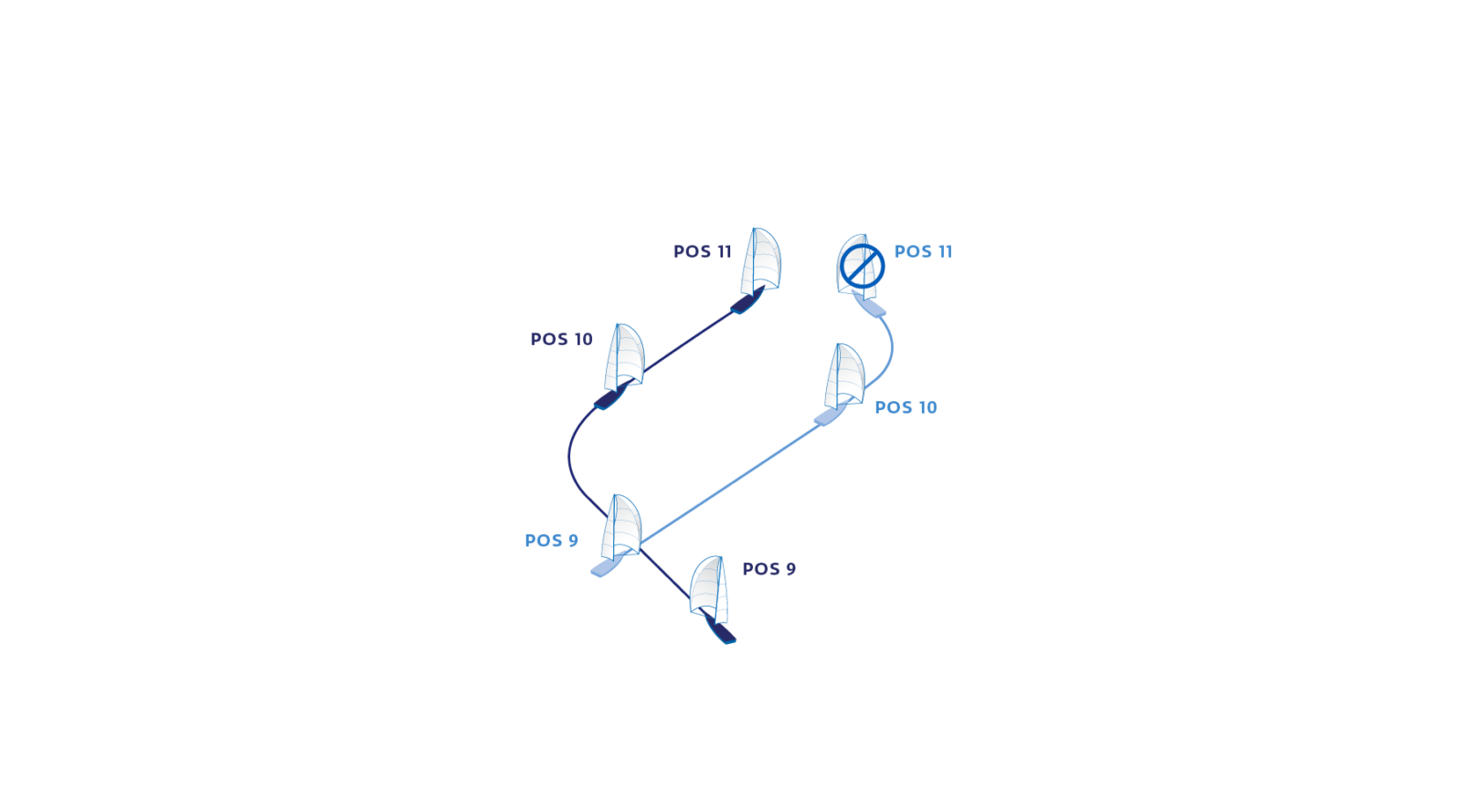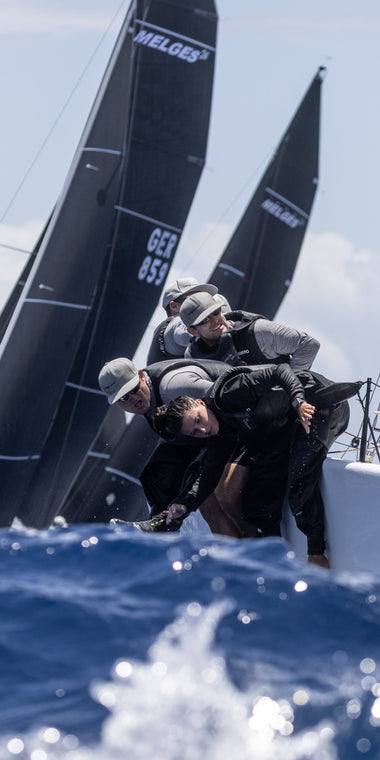DOWNWIND TACTICS
DOWNWIND TACTICS
In our previous installment we rounded the windward mark just behind our rival. In this segment North U Director Bill Gladstone explores downwind tactics against a single boat when you round close astern.
Consider this scenario: We’ve turned downwind within a couple of boat lengths of our rival – close enough that she is “under pressure.” No other boats are a concern. Pos 1 – Set the Scene. How can we pass them? Here’s How:

Speed First
You won’t pass anybody if you aren’t faster than they are (or at least as fast and more clever). You’ve got to focus on trim and speed first. When you’re fast then you can make tactical plays.
Basic Principles
Chase to the sides; attack when they come back. You can’t cover on both jibes. The basic play downwind is to get into attack position sailing toward the sides of the course and then attack when your rival jibes toward the middle.
Soak to Position
To get into position to attack try to match your rivals speed while ‘soaking’ a little lower. Be careful not to over-do your soak, especially in light air. If you are slow your rival may extend away beyond your wind shadow. Pos 2 – Soak

Attack!
As your rival jibes, you jibe. Do not delay. There’s no, “Ready to jibe.” The team is ready! Just turn the boat – that’s the “Jibe Ho” signal (Turn with weight, not helm). This ‘simo’ jibe puts your wind shadow on your rival’s air. Their windex should be pointed at you, and yours at them…

Our jibe suffocates them and they never get to full speed out of the jibe. We roll over them into the lead before they can recover. Well done!


They Fight Back
Alas, the leg is not over. On our next jibe our rival returns the favor, jibing on our air. Pos. 5 – Attacked. We can’t clear our air and he rolls over us. NOT Fair!

Come Out Hot
Sometimes you can escape an attack by ‘coming out hot’ – that is, reaching up to push your apparent wind forward coming out of the jibe. Probably a good idea to warn you team before the jibe of your intentions. It won’t work if you steer ‘hot’ but don’t trim ‘hot.’
Don’t Attack
A little while later our rival jibes again. We’re in position, but we don’t jibe. Why not? Recall our basic principle of chasing to the sides and attacking toward the middle: An attack here would violate that rule and leave our rival an avenue of escape to the inside.
Attack or Cross-Over?
Eventually we jibe Pos 8 and they jibe again. As the boats come converge we are in position to attack. In fact, we’re closer than before – a scant boat length behind now. One option is to jibe on their air. See below Pos 9S.

A jibe would put our rival in our bad air and allow us to roll them. This can be strong play. One potential downside is that they may be able to block us from jibing and crossing.
Note that if we do jibe, we should jibe when still 2 – 3 lengths away. That’s close enough for our wind shadow to work yet far enough that they cannot fight back with a luff. A jibe within a length leaves us vulnerable to a hard luff where our rival can take us “to the moon” and then drive off to clear air.

Cross Over
The alternative to jibing on their air is to Cross Over and Jibe. By Crossing Over and Jibing we gain control. Though we aren’t dishing out bad air we now control the path to the mark. We hold the starboard tack advantage and can jibe when we choose.


Clear Air
The Cross Over can be tricky in light air or high-performance boats as you must avoid the wind shadow of the windward boat.

Next Play
There’s always a next play. If our rival jibes we can match their jibe to a position with clear air aft of their shadow and with an avenue of escape to the middle. If we don’t jibe they may try to Cross Over and pin us in a reversal of our current set up.
Conclusion
From here we just need to sail fast to the leeward gate. In our next segment we’ll look at Leeward Gate Tactics.



























